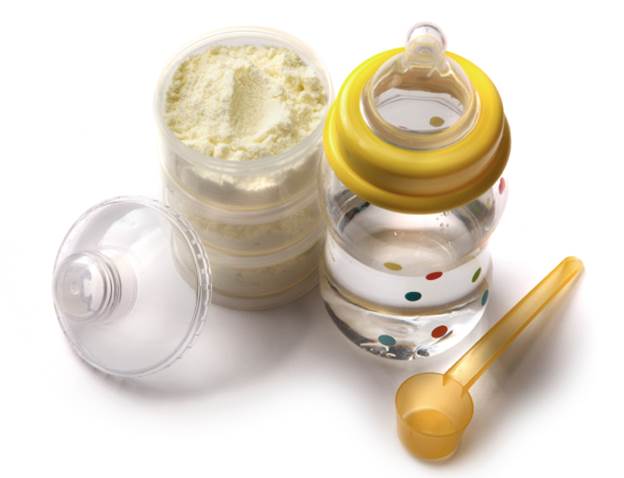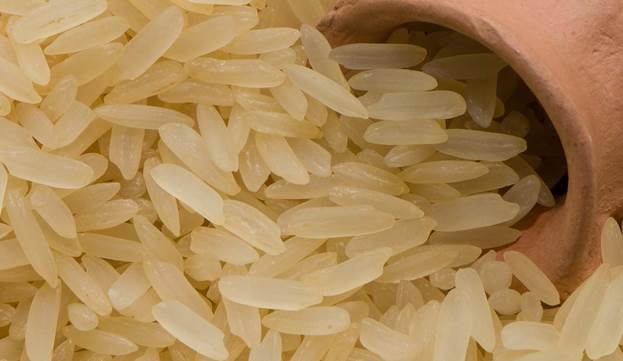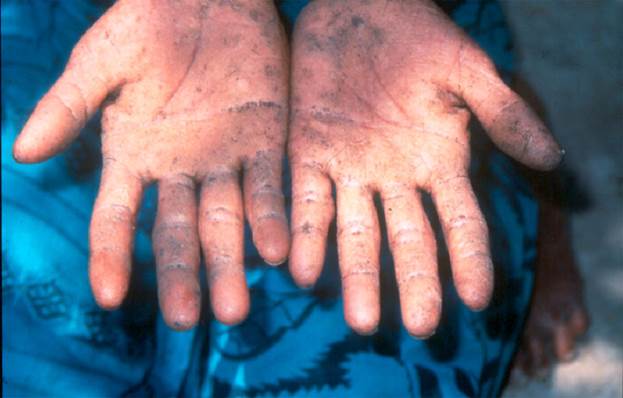Our findings show a real need for federal
standards for this toxin
Organic rice baby cereal, rice breakfast
cereals, brown rice, white rice-new tests by us have found that those and other
types of rice products on grocery shelves contain arsenic, many at worrisome
levels.

Our
analysis found varying levels of arsenic in more than 60 rice and rice products
–cereals, crackers, and more.
Arsenic not only is a potent human
carcinogen but also can set up children for other health problems in later
life.
Following our January investigation that
found arsenic in apple and grape juices, we recently tested more than 200
samples of a host of rice products. They included iconic labels and store
brands, organic products and conventional ones; some were aimed at the booming
gluten-free market.
The results of our tests were even more
troubling in some ways than our findings for juice. In virtually every product
tested, we found measurable amounts of total arsenic in its two forms. We found
significant levels of inorganic arsenic, which is a carcinogen, in almost every
product category, along with organic arsenic, which is less toxic but still of
concern. Moreover, the foods we checked are popular staples, eaten by adults
and children alike.

We
also discovered that some infant rice cereals, which are often a baby’s first
solid food, had levels of inorganic arsenic at least five times more than has
been found in alternatives such as oatmeal.
Though rice isn’t the only dietary source
of arsenic- some vegetables, fruits, and even water can harbor it- the
Environmental Protection Agency assumes there is actually no “safe” level of
exposure to in-organic arsenic.
No federal limit exists for arsenic in most
foods, but the standard for drinking water is 10 parts per billion (ppb). Keep
in mind: that level is twice the 5ppb that the EPA originally proposed and that
New Jersey actually established. Using the 5-ppb standard in our study, we
found that a single serving of some rice could give an average adult almost one
and a half times the inorganic arsenic he or she would get from a whole day’s
consumption of water, about 1 liter.
We also discovered that some infant rice
cereals, which are often a baby’s first solid food, had levels of inorganic
arsenic at least five times more than has been found in alternatives such as
oatmeal. Given our findings, we suggest limiting the consumption of rice
products.
Our study was a snapshot of the market,
with many products purchased in the New York metropolitan area and online, to
gauge the extent of arsenic’s presence in everyday foods. It can’t be used for overall
conclusions about specific brands. Still, we found important trends:
·
White rice grown in Arkansas, Louisiana,
Missouri, and Texas, which account for 76 percent of domestic rice, generally
had higher levels of total arsenic and in-organic arsenic in our tests than
rice samples from elsewhere.
·
Within any single brand of rice we tested, the
average total and inorganic arsenic levels were always higher for brown rice
than for white.
·
People who ate rice had arsenic levels that were
44 percent greater than those who had not, according to our analysis of federal
health data. And certain ethnic groups were more highly affected, including
Mexicans, other Hispanics, and a broad category that includes Asians.
·
Reducing arsenic in food is feasible. We
examined the efforts of two food companies trying to tackle the problem and
learned about methods being used to try to reduce arsenic in products.
·
Based on these findings, our experts are asking
the Food and Drug Administration to set limits for arsenic in rice products and
fruit juices as a starting point.

“We
believe the health benefits of rice must be properly weighed against the risks
of arsenic exposure, which we believe are minimal.”
Rice producers argue that concerns about
dietary exposure to arsenic in rice are overblown. “There is no documented
evidence of actual adverse health effects from exposure to arsenic in
U.S.-grown rice,” says Anne Banville, a vice president at the USA Rice
Federation, a trade association representing the $34 billion rice industry.
“And we believe the health benefits of rice must be properly weighed against
the risks of arsenic exposure, which we believe are minimal.”
But scientists warn of complacency. “We
already know that high concentrations of arsenic in drinking water result in
the highest known toxic substance disease risks from any environmental
exposure,” says Allan Smith, M.D., Ph.D., a professor of epidemiology at the
University of California, Berkeley. “So we should not be arguing to wait for
years until we have results of epidemiologic studies at lower arsenic intake,
such as from rice consumption, to take action”. His studies of arsenic in
public water in Chile and Argentina helped show that it causes lung and bladder
cancer and other diseases.
Studies show that arsenic can cause cancer
in humans
Such long-term studies that track health
effects of exposure to arsenic in rice have only recently begun in the U.S.
researchers at the Dartmouth Children’s Environmental Health and Disease
Prevention Research Center in late 2011 published a small but informative study
that indicated consuming slightly more than a half-cup of cooked rice per day
resulted in a significant increase in urinary arsenic levels, comparable to the
effects of drinking a liter of water containing the federal maximum of 10 ppb
arsenic. The authors say their results suggest “many people in the U.S. may be
exposed to potentially harmful levels of arsenic through rice consumption.”

Arsenic can cause cancer in humans
The USA Rice Federation says it is working
with the FDA and the EPA as they examine and assess arsenic levels in food and
has supplied rice samples to those agencies for research. It also says some of
its member companies may be doing their own testing. One rice company shared
with us details of how it is taking matters into its own hands. Grant Lundberg,
CEO of Lundberg Family Farms in Richvale, Calif., which sells rice and rice
products, says the company is testing more than 200 samples of the many varieties
of rice in its supply chain and plans to share the results with FDA scientists.
“We’re committed to providing safe food,
to really listening to our consumers, and dealing with this problem very openly
because doing the research needed to assess what the risks really are is the
only way to go,” Lundberg says.